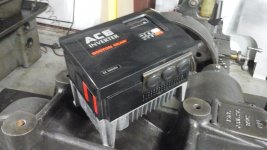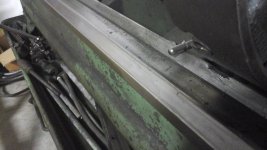M.B. Naegle
Diamond
- Joined
- Feb 7, 2011
- Location
- Conroe, TX USA
Cracked open the headstock last night. Mainly wanted to clean an inspect it for problems. There are a few teeth that have mushroomed about from chips and stuff being forced through them (easy fixes with a file), but otherwise no critical damage, just filthy. The brass yoke that shifts the engagement clutch between the high and low ranges feels like it has a lot of wear and was missing the upper screw. When the day comes to pull and service the spindle, I'll see if I can add a bronze sleeve to it to take out the play. Right now though, it's still shifting without issue. When I ran the lathe before I started taking it apart, things did sound a little clunky in general but I think it was mostly accumulated play in the gears and linear movement in the shafts, but nothing looks too far out and I couldn't feel any wear in the shafts and bearings themselves. The worst is some wear between the bearing and retaining collar on the right side of the pulley shaft (shaft closest to the operator), and this can be fixed externally.


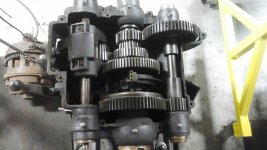





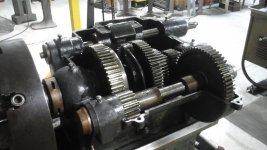
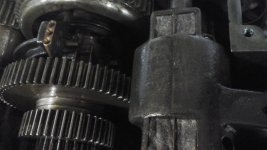

 , and would it be safe for me to just plug and ignore them?
, and would it be safe for me to just plug and ignore them? 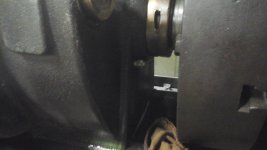

 Should be working well by the scraping class to be held here in february.
Should be working well by the scraping class to be held here in february. .
.  .
.


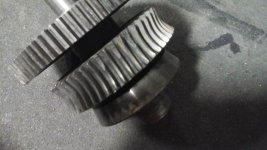


 . Easy to reverse once they are made true again.
. Easy to reverse once they are made true again.
